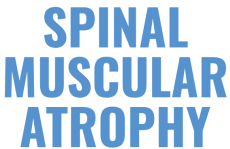

Spinal Muscular Atrophy; What it is, it’s causes and types
What is SMA?
Have you heard of it? I had not until earlier this year. Spinal Muscular Atrophy (SMA) is a genetic condition that impairs the ability to move due to muscle weakening. The severity of the condition and it’s carrier frequency being quite high makes it surprising that it is not that known by the general public. SMA is the second most common genetic cause of infant mortality, with 1 in 50 people being carriers and an incidence of 1 in 10,000 births. Symptoms have a dramatic onset, where before they show, the patient appears to be perfectly fine, with correct muscular function. However, symptoms and first appearance of symptoms varies depending on the type of SMA a patient has. Typical symptoms are: breathing difficulties, swallowing issues, weak or floppy arms and legs, difficulty moving (including sitting up, crawling or walking), muscles tend to twitch and shake and patients have bone and joint problems. The condition does not affect intelligence nor does it cause learning disabilities. The disease is caused by the loss of anterior horn cells of the spinal cord, causing progressive deterioration of skeletal muscle. When this affects muscles involving respiratory muscles, the condition becomes life threatening.
What causes SMA?
SMA patients must have parents that are both carriers of the faulty gene, it is therefoe recessive. Carriers do not actually have SMA themselves but if 2 parents are carriers there is a 1 in 4 chance that the child will have SMA. There is also a 1 in 4 chance that the child will not have SMA and will not be a carrier. Lastly, there is a 1 in 2 chance that the child will be a carrier. SMA is caused by mutations in the survival motor neuron (SMN) gene which is located at Chr 5q13, an unstable genomic region. There have been various mutations identified at this point, such as large scale deletions, frame shift mutations and point mutations.
Types of SMA
Type 1 SMA is the most severe, the onset of symptoms is between 4 and 6 months in infancy. The prognosis is poor and the child will typically die between the age of 2 and 4. Type 2 patients have an intermediate form of SMA, the onset of symptoms is roughly over a year after birth, and again the prognosis is poor. A few years ago, the type 2 child would typically die between the age of 8 and 16, but in recent years that has increased due to better nutrition and support from breathing apparatus. Type 3 is the least severe form in children. The onset of symptoms appears roughly over 2 years of age. The patient, whilst weaker, can live quite a common life with a normal life span. Type 4 is a mild condition affecting adults, most are able to walk whilst a few will require wheelchair assistance.
Want to find out a little more?
If you are interested in seeing what SMA can really be like, an interesting documentary to watch would be episode 2 of Unnatural Selection on Netflix. It discusses SMA; the need for treatment, the difficulties of getting that treatment and how debilitating the condition really is. It is well worth the watch in my opinion!
Read the next article to learn about treatments…
image- https://treat-nmd.org/treat-nmd-diseases/spinal-muscular-atrophy/

0 Comment:
Be the first one to comment on this article.